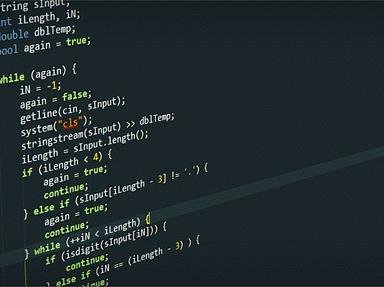Quiz Answer Key and Fun Facts
1. Who was the child of a famous poet and English mathematician whom many historians consider the first programmer?
2. What is the name of the first widely-used programming language that was developed by IBM in the mid 1950s?
3. Choose the pair that best expresses a relationship similar to the following:
C++ : Python
4. What is the name of the programming language, created in 1958, popularly used in artificial intelligence and which uses lists as a main data structure?
5. As the year approached 2000, programmers and businesses realized they might be in trouble because one of the widely-used programming languages used only two-digit fields for the notation for years. Suddenly, those programmers who were versed in this particular language were in more demand than usual to prepare for the new century. What language was this?
6. An American mathematician, who was also a Naval Rear Admiral, is credited with creating FLOW-MATIC, a programming language intended to read more like English than math. Who was this multi-talented person?
7. This computer language was developed at Bell Labs between 1969 and 1973 in large part to run on Unix. It became one of the most universally used languages of all time. Can you name this language with the short name?
8. This programmer may be a rockstar in certain circles but he's not necessarily widely-known so I'm going to give several hints. Stop when you can name him!
Born in Denmark in 1960.
Wrote programs in his teens.
Wrote TurboPascal with Borland.
Was one of the first documented receivers of a $1M signing bonus.
Thus became architect of C# at Microsoft.
9. Larry Wall is an American programmer who created Perl. His motto for PERL about the flexibility of languages is shortened to "TIMTOWTDI." What does it stand for?
10. An Apple tool developer quietly wrote a new language designed to make it easy to create apps for all of the company's major devices. Apple introduced the language publicly in the summer of 2014 and emphasized how quickly it works. What is the name of this rapid programming tool?
Source: Author
PootyPootwell
This quiz was reviewed by FunTrivia editor
rossian before going online.
Any errors found in FunTrivia content are routinely corrected through our feedback system.

